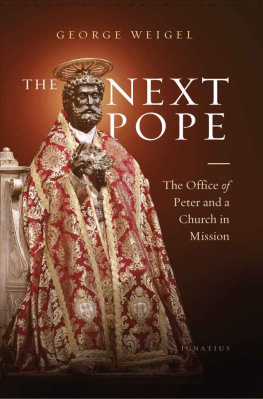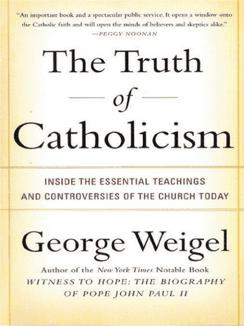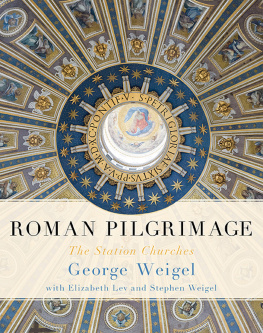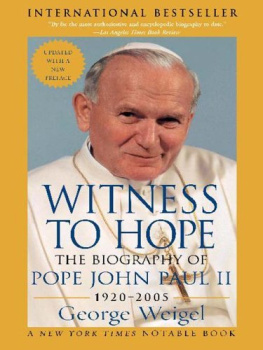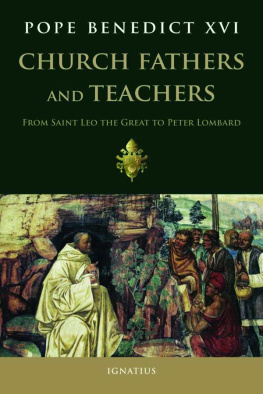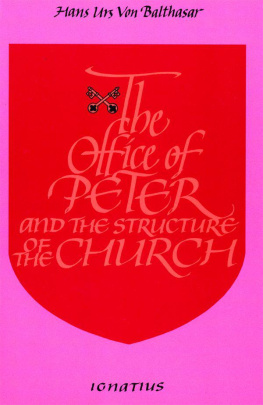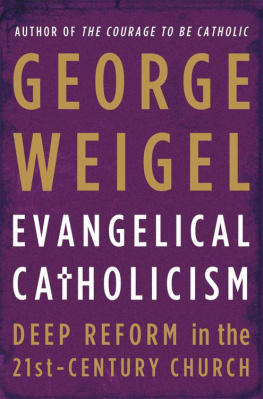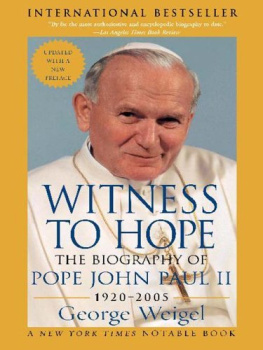George Weigel - The Next Pope: The Office of Peter and a Church in Mission
Here you can read online George Weigel - The Next Pope: The Office of Peter and a Church in Mission full text of the book (entire story) in english for free. Download pdf and epub, get meaning, cover and reviews about this ebook. year: 2020, publisher: Ignatius Press, genre: Religion. Description of the work, (preface) as well as reviews are available. Best literature library LitArk.com created for fans of good reading and offers a wide selection of genres:
Romance novel
Science fiction
Adventure
Detective
Science
History
Home and family
Prose
Art
Politics
Computer
Non-fiction
Religion
Business
Children
Humor
Choose a favorite category and find really read worthwhile books. Enjoy immersion in the world of imagination, feel the emotions of the characters or learn something new for yourself, make an fascinating discovery.
- Book:The Next Pope: The Office of Peter and a Church in Mission
- Author:
- Publisher:Ignatius Press
- Genre:
- Year:2020
- Rating:5 / 5
- Favourites:Add to favourites
- Your mark:
- 100
- 1
- 2
- 3
- 4
- 5
The Next Pope: The Office of Peter and a Church in Mission: summary, description and annotation
We offer to read an annotation, description, summary or preface (depends on what the author of the book "The Next Pope: The Office of Peter and a Church in Mission" wrote himself). If you haven't found the necessary information about the book — write in the comments, we will try to find it.
The Next Pope: The Office of Peter and a Church in Mission — read online for free the complete book (whole text) full work
Below is the text of the book, divided by pages. System saving the place of the last page read, allows you to conveniently read the book "The Next Pope: The Office of Peter and a Church in Mission" online for free, without having to search again every time where you left off. Put a bookmark, and you can go to the page where you finished reading at any time.
Font size:
Interval:
Bookmark:
THE NEXT POPE
GEORGE WEIGEL
The Office of Peter and
a Church in Mission
IGNATIUS PRESS SAN FRANCISCO
Unless otherwise indicated, Scripture quotations are from the Revised Standard Version of the BibleSecond Catholic Edition (Ignatius Edition) copyright 2006 National Council of the Churches of Christ in the United States of America. Used by permission. All rights reserved worldwide.
Excerpts from documents of the Second Vatican Council are from Vatican Council II: The Conciliar and Postconciliar Documents , edited by Austin Flannery, OP, 1996. Used with permission of Liturgical Press, Collegeville, Minnesota.
Cover Art:
Saint Peter in Cathedra
Bronze sculpture
Arnolfo di Cambio (1245-1302)
St. Peters Basilica, Vatican State
Photograph by Stefano Spaziani
Cover design by Enrique J. Aguilar
2020 by Ignatius Press, San Francisco
All rights reserved
ISBN 978-1-62164-433-0 (HC)
ISBN 978-1-64229-128-5 (eBook)
Library of Congress Control Number 2020938394
Printed in the United States of America
Over the past three decades, I have had the privilege of extended conversations with Pope John Paul II, Pope Emeritus Benedict XVI, and Pope Francis. What I learned from those encountersand from many years of interaction with Catholics on every continent, living all stations of life in the Churchhas prompted the reflections in this book.
What follows, therefore, is a partial payment on a large debt.
The Catholic Church is the same Church over time, for as Saint Paul reminds us in Ephesians 4:5, it serves the same Lord, is formed by the same faith, and is born from the same baptism. The Catholic mode of being-the-Church changes, however, to meet the demands of continuing Christs saving mission in the world. There have been five such epochal transitions in Christian history. One of them is underway now.
In the first of these great transitions, what we know as the Early Church definitively separated from what became rabbinic Judaism, in a process that accelerated after the First Jewish-Roman War in 70 A.D. That Early Church gave way to, even as it gave birth to, Patristic Christianity, which emerged in the fourth century and was shaped by the Churchs encounter with classical culture. Toward the end of the first millennium, Patristic Christianity gave way to, even as it gave birth to, Medieval Christendom, the closest synthesis of Church, culture, and society ever achieved. Medieval Christendom fractured in the several Reformations of the sixteenth century, and from that cataclysm came Counter-Reformation Catholicism: the mode of being the Church in which every Catholic born before the mid-1950s grew up.
And toward the end of the second millennium, the fifth great transition began to gather force throughout the world Church: from Counter-Reformation Catholicism to the Church of the New Evangelization. Catholics live today within the turbulence of this transitional moment.
In the third decade of the twenty-first century, the Catholic Church finds itself at a critical breakpoint in that fifth epochal transition. For the three popes I have personally known and whose Petrine ministries I have closely followed have all, in one way or another, been men of the Second Vatican Council: the event that fully set in motion the transition from Counter-Reformation Catholicism to the Church of the New Evangelization. The next pope, though, will not have been shaped by Vatican II in the same way as his three predecessors in the Chair of Saint Peter.
As a very junior Polish bishop and later the archbishop of Krakw, Karol Wojtya (the future Pope John Paul II) took an active role in all four periods of the Council and helped draft its Pastoral Constitution on the Church in the Modern World, Gaudium et Spes . As a young peritus or theological expert at Vatican II, Joseph Ratzinger (the future Pope Benedict XVI) was influential in developing five conciliar texts, including the Councils dogmatic constitutions on the Church and on divine revelation. The papal programs of John Paul II and Benedict XVI were profoundly influenced by their experiences of Vatican II and its reception throughout the world Church. Indeed, their pontificates can be understood as a single, thirty-five-year effort to give the Council an authoritative interpretation. That effort pivoted around the special Synod of 1985, which found the key to interpreting the sixteen documents of Vatican II in the concept of the Church as a communion of disciples in mission. That pivot eventually led to the proclamation of the New Evangelization before and during the Great Jubilee of 2000, and to the 2007 Aparecida Document of the bishops of Latin America and the Caribbeanperhaps the most developed statement yet of what a communion of disciples in mission must be.
Unlike his two papal predecessors, Jorge Mario Bergoglio (the future Pope Francis) did not experience the Second Vatican Council directly. But he was a young Jesuit during the Council and a religious superior in the contentious period immediately following Vatican II. As archbishop of Buenos Aires, he was a crucial figure in drafting the Aparecida Document. As pope, Francis has described Pope Paul VI (who presided over three of Vatican Ils four sessions) as his papal model, and he canonized both Pope Paul and Pope John XXIII, the two popes of the Second Vatican Council. Thus Pope Francis is very much a conciliar pope.
The next pope will likely have been a teenager or a very young man during the Vatican II years; he may even have been a child during those years. In any case, he will not have been shaped by the experience of the Council and the immediate debates over its meaning and its reception like John Paul II, Benedict XVI, and Francis. Thus the next pope will be a transitional figure in a different way than his immediate predecessors. So it seems appropriate to ponder now what the Church has learned from its experiences during the pontificates of these three conciliar popesand to suggest what the next pope might take from that learning.
The Catholic Church will be crossing into uncharted territory in the next pontificate. So it is important to reflect now on two questions:
What has the Holy Spirit been teaching a Church-in-transition
What are the qualities needed in the man who will lead the Church through this transition, bearing the awesome responsibility and great burden of the Office of Peter, which holds the keys of the kingdom of heaven (Mt 16:19)?
This Catholic Moment
The Father... will give you another Counselor, to be with you for ever... the Spirit of truth.... You know him, for he dwells with you, and will be in you .
John 14:16-17
For the past century and a half, the Holy Spirit has been leading the Catholic Church toward a third millennium of renewed evangelical witness and intensified missionary fervor.
That journey into the depths of the Gospel has been an experience of grace, but it has not been without difficulty. The reforms necessary to ensure that the Church of the twenty-first century can fulfill the Great CommissionGo... make disciples of all nations (Mt 28:19)remain to be completed. There are deep divisions over Catholic doctrine and identity, Catholic practice, and Catholic mission within the Church itself. The dark shadow of scandal touches many local Churches. Our Catholic moment is not a tranquil one.
Yet if we survey the world Church and note where Catholicism is alive and vital, and where the Church is moribund or dying, the path that the promised Counselor, the Holy Spirit, has set for the Catholic Church in the third millennium comes into focus.
The Church that has embraced the Gospel, offering men and women the great gift of friendship with the Lord Jesus Christ, incorporating those friends of the Lord into the communion of his disciples, and sacramentally empowering those disciples to offer others the gift they have received that Catholicism is alive, even under challenging cultural and political circumstances. And that Catholicism is making important contributions to society, culture, and public life.
Next pageFont size:
Interval:
Bookmark:
Similar books «The Next Pope: The Office of Peter and a Church in Mission»
Look at similar books to The Next Pope: The Office of Peter and a Church in Mission. We have selected literature similar in name and meaning in the hope of providing readers with more options to find new, interesting, not yet read works.
Discussion, reviews of the book The Next Pope: The Office of Peter and a Church in Mission and just readers' own opinions. Leave your comments, write what you think about the work, its meaning or the main characters. Specify what exactly you liked and what you didn't like, and why you think so.

